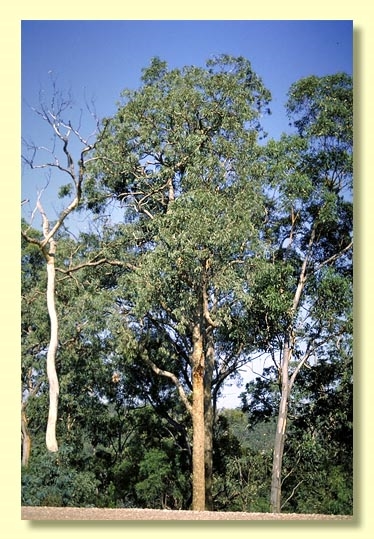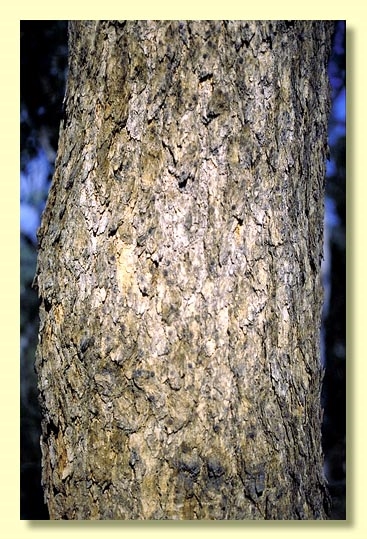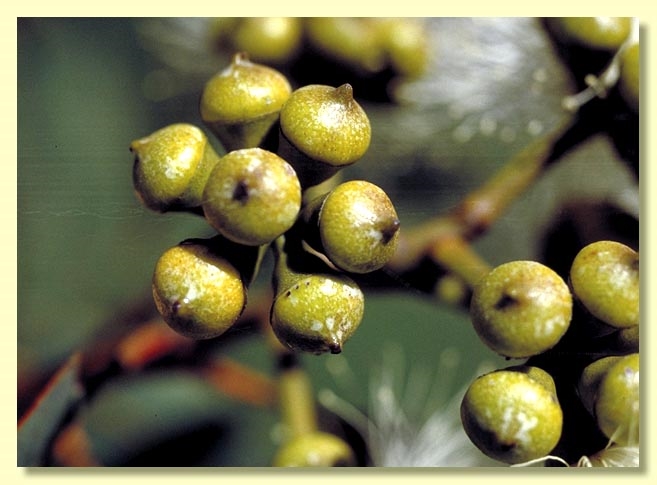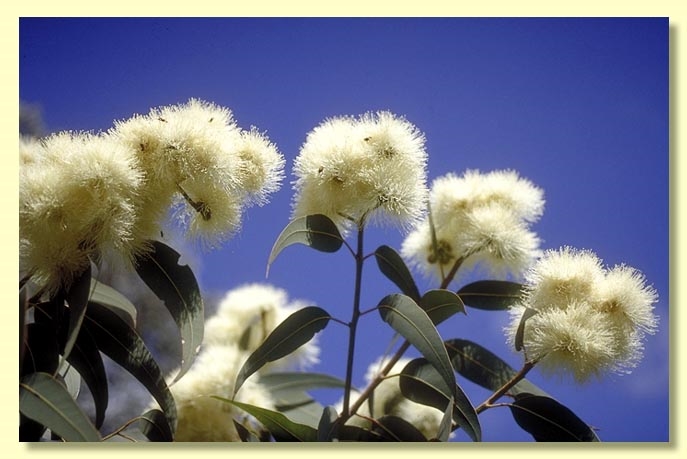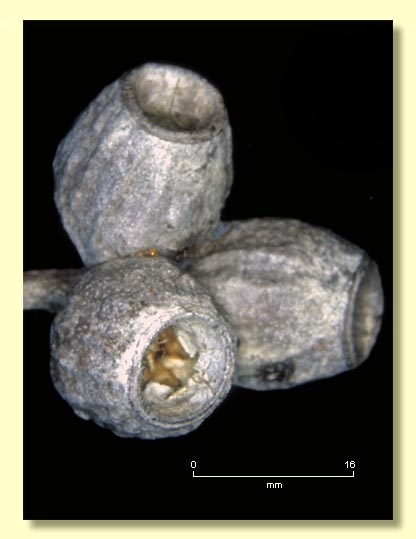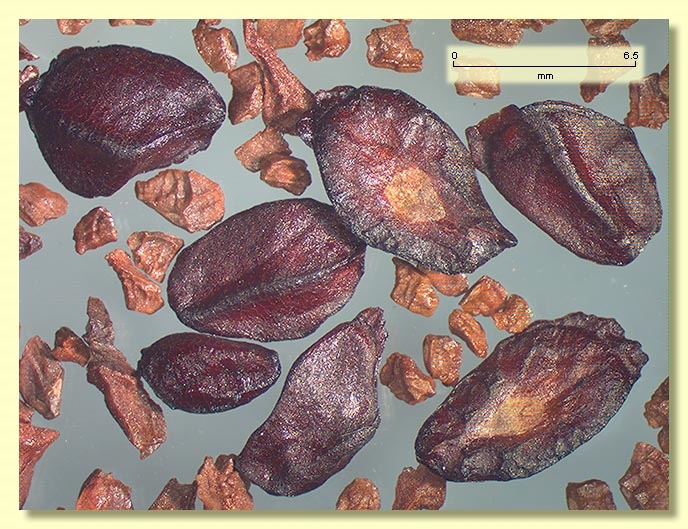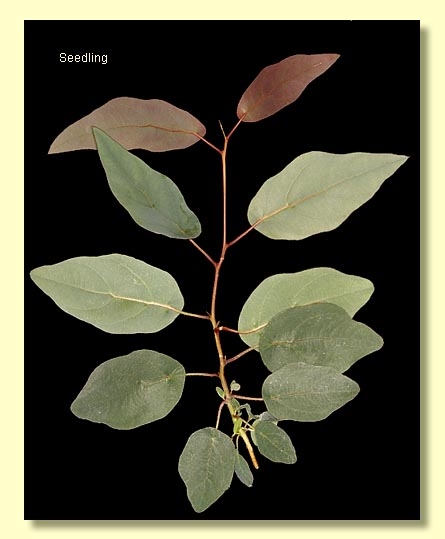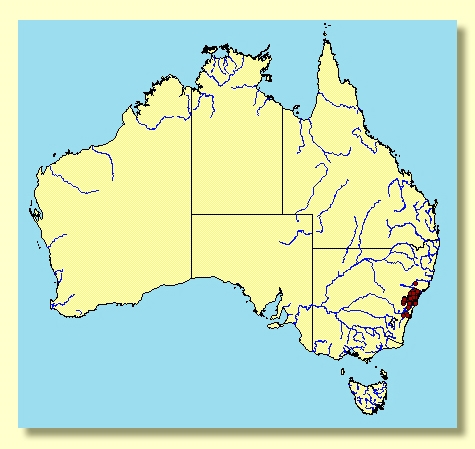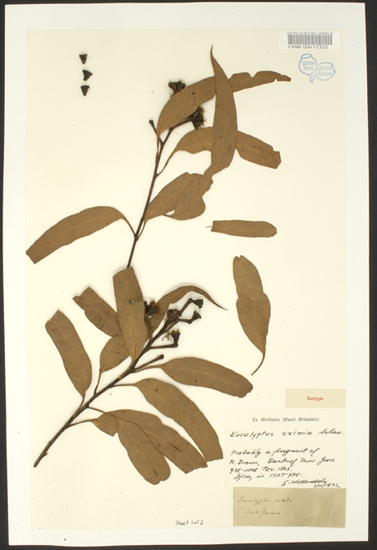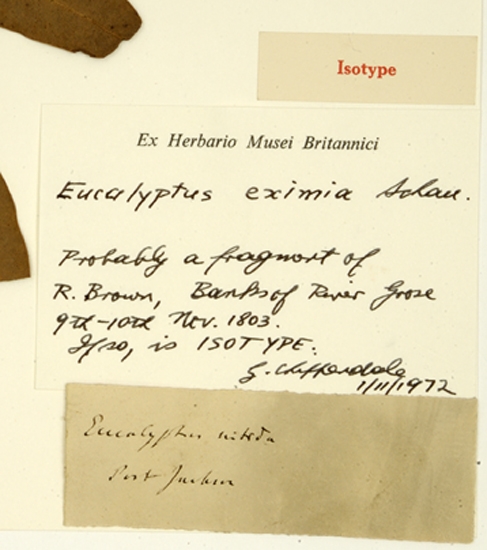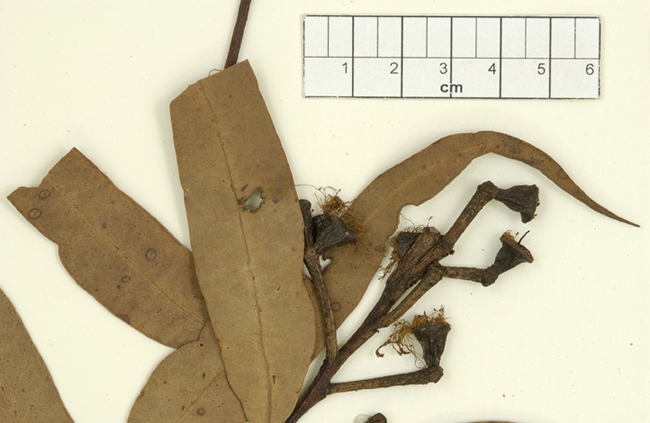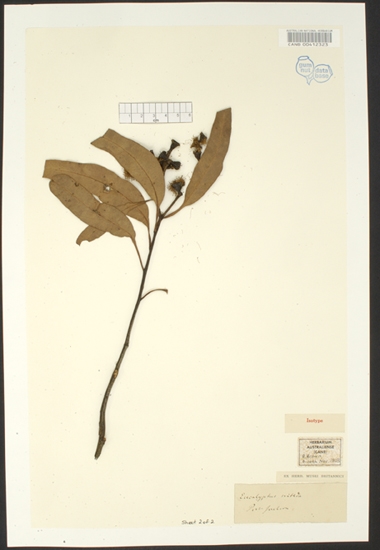Euclid - Online edition
Corymbia eximia
Corymbia | Ochraria
Corymbia eximia (Schauer) K.D.Hill & L.A.S.Johnson, Telopea 6: 383 (1995).
Bark rough to small branches, tessellated, flaky, yellow-brown to yellow and grey.
Juvenile growth (coppice or field seedlings to 50 cm): stem rounded in cross-section; juvenile leaves opposite for 3 to 6 nodes, then alternate, always petiolate, peltate (at least to ca node 15), ovate at first then lanceolate to falcate, 4–21 cm long, 2.5–8 cm wide, base rounded, green to grey-green; scabrid on stems, petioles and lamina for up to ca 10 nodes.
Adult leaves alternate, petiole 1.5–3.5 cm long; blade lanceolate to falcate, 10–24 cm long, 1.7–6 cm wide, base tapering to petiole or rounded, concolorous, slightly glossy or dull, green to grey-green, strongly penniveined, densely to very densely reticulate, intramarginal vein parallel to and just within margin, oil glands island.
Inflorescence terminal compound, peduncles 1.5–4 cm long, buds 7 per umbel, sessile or pedicels to 0.4 cm long. Mature buds pyriform to obovoid, 1–1.3 cm long, 0.7–1 cm wide, green to yellow, scar present (outer operculum shed during bud development), operculum conical to beaked, stamens inflexed, anthers cuboid to oblong, versatile, dorsifixed, dehiscing by longitudinal slits (non-confluent), style long, stigma tapered, locules 3 or 4, the placentae each with 5 vertical ovule rows. Flowers white.
Fruit sessile to shortly pedicellate (pedicels 0–0.2 cm long), barrel-shaped to urceolate, 1–1.9 cm long, 1–1.6 cm wide, disc descending, valves 3 or 4, enclosed.
Seeds reddish brown, 5–8 mm long, flattened ovoid to boat-shaped, dorsal surface smooth and usually cracked, not winged, hilum ventral.
Cultivated seedlings (measured at ca node 10): cotyledons reniform to orbicular; stems rounded in cross-section, scabrid in lower part, smooth above; leaves always petiolate, opposite for 3 to 6 nodes then alternate, ovate or lanceolate, 8–12 cm long, 3–8 cm wide, base rounded but with petiole peltately inserted into lamina, margin entire, apex pointed to rounded, more or less concolorous, dull, grey-green, scabrid for ca 6 pairs.
A small to medium-sized yellow bloodwood tree endemic to New South Wales, occurring from west of Nowra on the south coast, north through the lower parts of the Blue Mountains to the Hunter Valley but not north thereof, on sandstone.
The adult leaves of Corymbia eximia are concolorous, prominently falcate, somewhat thick and dull green to bluish green. The flaky, pale yellow-grey rough bark may be confused with that of C. trachyphloia which is distinguished by the smaller adult leaves that are darker above, paler below, and the delicate, smaller buds and fruit. Seeds of C. eximia are flattened ellipsoidal with a ventral hilum and reddish brown with a cracked seedcoat. The only other bloodwood in the general area of occurrence of C. eximia is C. gummifera which differs by having firm tessellated rough bark predominantly grey-black, leaves dark green above and paler below, buds without an operculum scar (both opercula held until flowering), and distinctly urceolate fruit.
MORE ABOUT CORYMBIA
MORE ABOUT YELLOW BLOODWOODS

